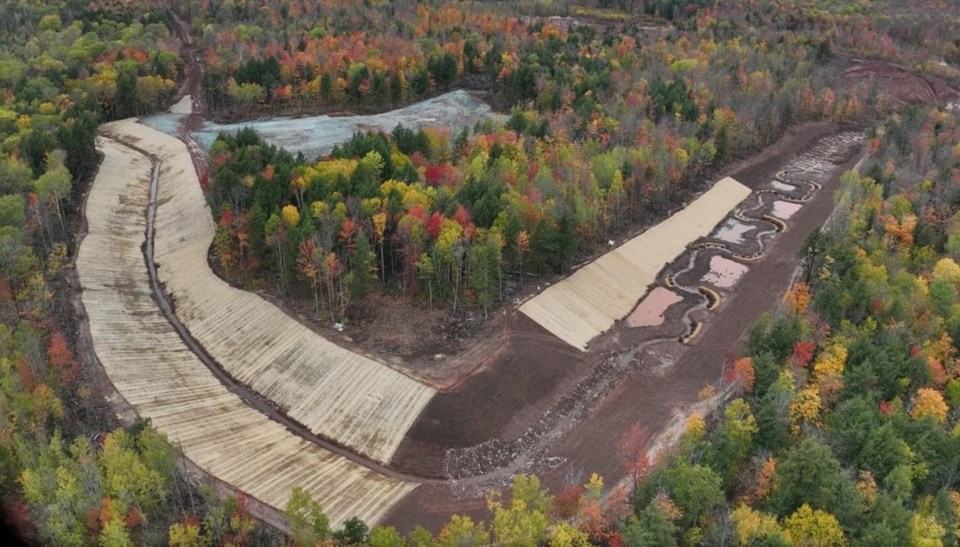Copper is known as the metal of electrification.
Highland Copper holds ample reserves in a historic mining district in Michigan’s Upper Peninsula that could address a looming supply shortage of the metal that’s used in electric vehicles and alternative sources of power.
With two multi-billion-pound copper projects located at the base of the Keweenaw Peninsula, CEO Barry O’Shea said his Quebec and Michigan-based company could be stepping into project funding and a construction decision by 2024 to start a three-year build.
Located in Michigan's ‘Copper Country,’ O’Shea said since they have pocketed all the necessary state permits, they can start construction of its proposed underground Copperwood Mine. It’s just a matter of securing funding for the US$425-million endeavour.
Copperwood is the smaller of its two projects, but it is one of the few fully permitted copper projects in the U.S.
The 3.7-billion-pound indicated resource has an initial 11-year mine life with legs to last longer based on more resources that have yet to be proved up.
Copper has been classified by the U.S. government as a critical mineral and is a key metal that could help alleviate a looming copper supply deficit that only figures to grow.
With economists reaching consensus that the demand and price for copper will increase due to global geopolitics, the U.S. government doesn't want to leave things to chance and is encouraging development of a domestic supply of the metal.
O’Shea believes his company has an opportunity to start mining right at peak U.S. demand.
Access to capital by junior miners, like Highland, has been a tough slog so Highland was pleased to cut a deal earlier this year with Kinterra Copper USA to keep Copperwood moving forward, said O’Shea.
In a joint venture agreement, Highland sold a 66 per cent ownership stake of its nearby White Pine North copper project to Kinterra for US$30 million. Those funds are earmarked for early site construction at Copperwood.
Want to read more stories about business in the North? Subscribe to our newsletter.
White Pine North is the larger of the two deposits, containing 5.4 billion pounds of copper with an estimated 22-year mine life. Kinterra is running that project and is deep into its environmental baseline study and permitting applications with the state.
Operating in the U.S., O’Shea said there are opportunities to tap into state and federal funding, plus the real potential for industry partnerships, such as off-take supply or financing agreements with Detroit auto manufacturers and other manufacturers.
O’Shea said the State of Michigan supports job-creating projects and they’ve received “considerable support” through endorsements from area municipal councils. However, O’Shea said, as a mining business, there are always pockets of opposition that they take seriously and “listen as needed.”
The spinoffs for the region are considerable.
Construction figures to create 300 on-site jobs over a three-year period and an estimated 159 jobs with local vendors. That activity would generate $4.5 million in local, country and state revenues annually and add $74 million to Michigan’s gross state product each year over three years.
Copperwood would create 380 mining jobs in Wakefield Township with spending supporting an additional 313 direct and indirect jobs. Operational spending would generate $12 million in local, county and state tax revenue annually.
As part of its state permitting obligations, Highland carried out some early site prep work through some environmental mitigation measures to limit their impact on the land.
At Copperwood, contractors dug a water diversion channel to steer streams around the edges of their proposed mine tailings disposal area and also created some new wetland areas.
The company hinted that there could be some residual spinoffs for Canada.
Site manager Mike Foley said the copper concentrate produced at Copperwood would be hauled out by truck to a rail facility and would head to a smelter “not quite of a known origin yet.”
Foley said it’s “fairly likely” it could end up in Canada, but a smelter in Europe or Asia is not out of the question. There are no agreements in place yet but they are exploring “most economically and viable alternatives.”




